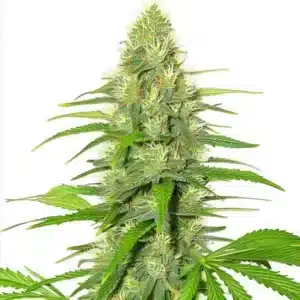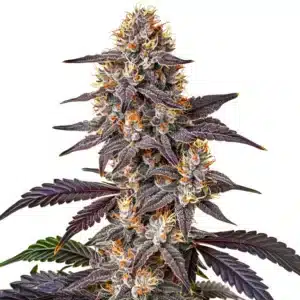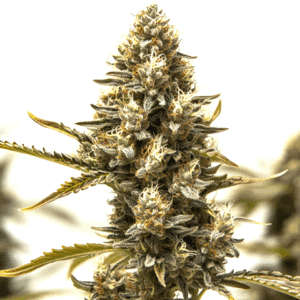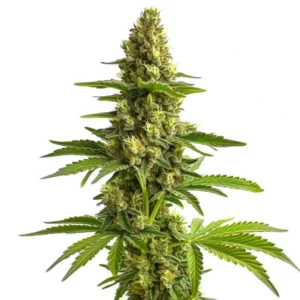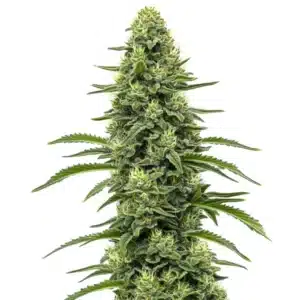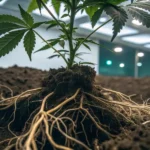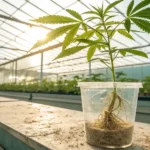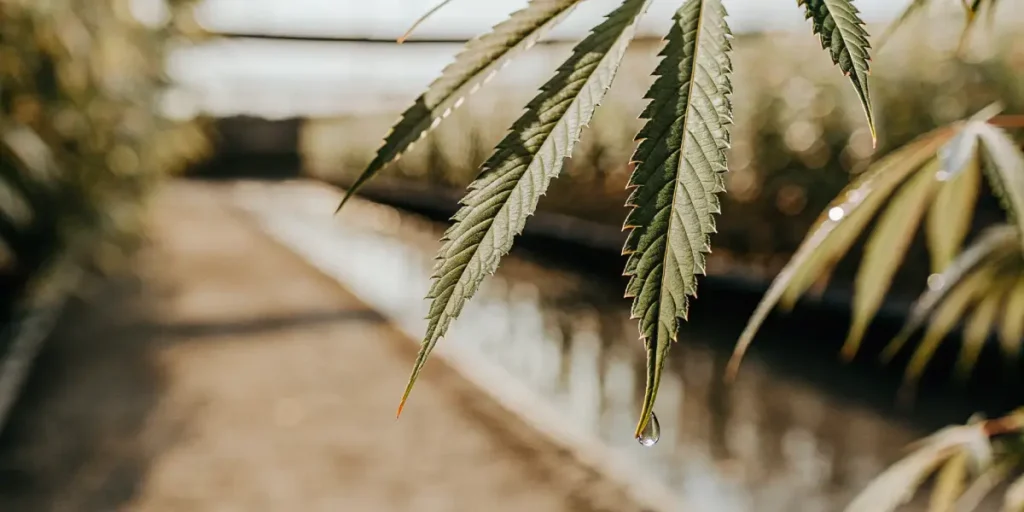
Root Pressure vs Transpiration in Cannabis
In the world of cannabis cultivation, water movement is crucial. Two main processes handle this: root pressure and transpiration. Both play key roles in nutrient uptake and plant health. Knowing root pressure vs transpiration in cannabis helps growers see how these mechanisms work together, ensuring healthier plants and higher yields. First-time growers and seasoned enthusiasts alike need to grasp these concepts to optimize their cannabis harvests.
Root pressure pushes water upward from the roots. It’s like a gentle pump working inside the plant. This action occurs mainly at night when transpiration is low. During this time, roots actively absorb nutrients, crucial for growth. Picture it as the plant’s way of ensuring it doesn’t starve when the sun isn’t shining.
Recommended Strains
Green Crack
|
|
THC | 21% (Medium) |
|
|
Type | Feminized |
|
|
Yield | High |
|
|
Phenotype | 35% Indica / 65% Sativa |
White Widow
|
|
THC | 18% - 25% (Medium) |
|
|
Type | Feminized |
|
|
Yield | High |
|
|
Phenotype | 45% Indica / 55% Sativa |
Transpiration, on the other hand, is the process of water evaporating from the leaves. It creates a suction force that pulls water upward. This daytime process is vital for cooling the plant and distributing nutrients. Both root pressure and transpiration are essential, but they function differently.
Comparing Root Pressure and Transpiration Effects in Cannabis
When comparing root pressure and transpiration effects in cannabis, it’s important to note their contributions. Root pressure helps in the initial stages of nutrient uptake. It builds pressure within the root system, pushing water and nutrients upwards, even against gravity.
Transpiration takes over during the day, amplifying water movement. This process is driven by light and temperature. As water evaporates, it pulls more water from the roots, facilitating nutrient transport. Together, these processes ensure the plant gets what it needs around the clock.
Root pressure and transpiration in cannabis cultivation are intertwined processes that work in harmony to sustain plant vitality. While root pressure offers a consistent supply of water and nutrients during the night, transpiration takes charge during the day, making sure that the plant remains hydrated and cool. This balance is vital for healthy growth and maximizing yields.
Knowing the dynamics of root pressure vs transpiration in cannabis allows growers to fine-tune their cultivation practices. By adjusting environmental conditions such as humidity and temperature, growers can optimize these processes. This knowing is crucial for those aiming to achieve superior growth and robust cannabis plants.
Promos & Deals
Impact of Root Pressure vs Transpiration on Cannabis Growth
The impact of root pressure vs transpiration on cannabis growth is significant. Root pressure ensures that even at night, when photosynthesis halts, the plant continues to receive nutrients. This is particularly beneficial for strains like Green Crack from Blimburn Seeds, known for its vigorous growth.
Transpiration, in contrast, is more about daytime activity. It keeps the plant cool and aids in the distribution of nutrients gathered during the night. Strains like White Widow benefit greatly from efficient transpiration due to their dense foliage.
The impact of root pressure vs transpiration on cannabis growth cannot be overstated. Each process plays a unique role in ensuring that the plant remains healthy and productive. Root pressure supports nutrient uptake during cooler, darker periods, while transpiration ensures efficient nutrient distribution and temperature regulation during daylight hours.
By knowing how root pressure and transpiration affect cannabis yields, growers can make strategic decisions about plant care. This includes selecting the right strains for their growing conditions and optimizing environmental factors to suit the specific needs of their plants. The result is a harmonious growth cycle that maximizes plant potential.
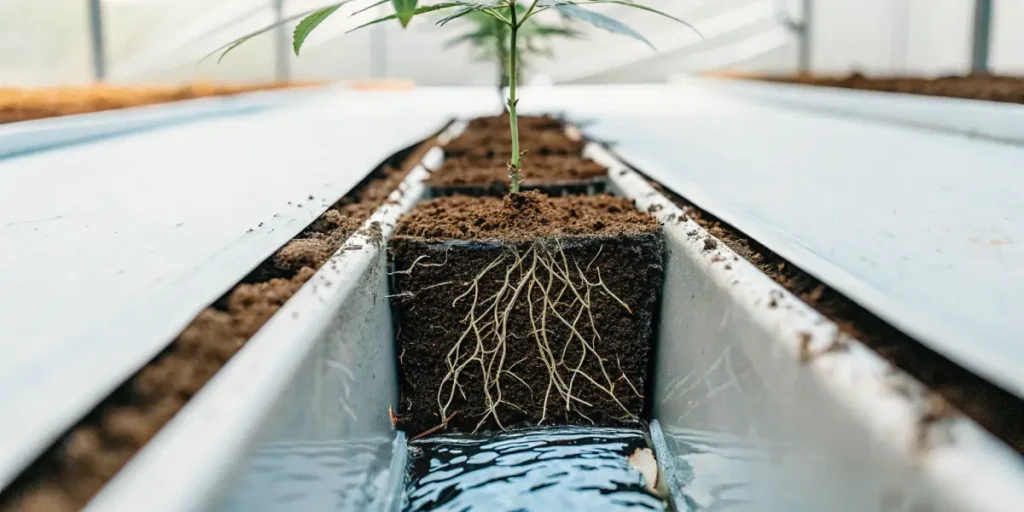
How Root Pressure and Transpiration Affect Cannabis Yields
Knowing how root pressure and transpiration affect cannabis yields can make or break a grow operation. Root pressure ensures that plants like Bruce Banner 3 maintain nutrient uptake during off-peak hours. This steady supply supports robust growth and healthy development.
Transpiration affects yields by regulating temperature and nutrient flow during daylight hours. It promotes healthy leaf function and photosynthesis, directly impacting bud quality. Growers should monitor environmental conditions to maximize this process.
In the realm of cannabis cultivation, mastering how root pressure and transpiration affect cannabis yields is essential for success. These processes are intricately linked to the overall health and productivity of the plant. By maintaining a balance between them, growers can achieve optimal results in both growth and yield.
Cannabis plant water transport root pressure vs transpiration is a complex interplay that requires careful management. Ensuring adequate root health and a conducive environment for transpiration will lead to vigorous plant growth and higher yields. This knowledge empowers growers to tailor their practices for maximum efficiency and output.
FAQs
What is the main difference between root pressure and transpiration in cannabis?
Root pressure and transpiration are both vital for cannabis water transport. The main difference lies in timing and function. Root pressure works primarily at night, pushing water and nutrients from the roots upwards. It acts as a backup for when transpiration is low. Think of it as the plant’s night shift worker.
Transpiration, however, is the day worker. It occurs when the sun is out, facilitating water movement through evaporation. This process cools the plant and aids in nutrient distribution. Both are crucial, but they operate under different conditions to support plant health.
Root pressure vs transpiration in cannabis highlights the distinct yet complementary roles these processes play. Root pressure ensures that the plant receives a steady nutrient supply during the night, while transpiration handles nutrient distribution and cooling during the day. Together, they create a balanced system that supports overall plant health.
By knowing the main differences between root pressure and transpiration, growers can better manage their cultivation practices. This knowledge helps in optimizing water transport within the plant, ultimately enhancing growth and yield. It is this synergy that defines successful cannabis cultivation.
How do environmental factors influence root pressure vs transpiration in cannabis?
Environmental factors like temperature, humidity, and light intensity greatly influence these processes. High humidity can reduce transpiration rates as there’s less need for the plant to release water. This can affect nutrient transport, especially during the day.
Temperature plays a role too. Warmer conditions increase transpiration, while cooler nights enhance root pressure activity. Adjusting these factors in your grow environment can help optimize both processes, ensuring your plants thrive.
In cannabis cultivation, environmental factors have a profound impact on root pressure and transpiration. By carefully managing these factors, growers can optimize the conditions for both processes to work effectively. This involves fine-tuning elements such as humidity and temperature to support plant health and productivity.
Comparing root pressure and transpiration effects in cannabis involves knowing how these processes respond to environmental changes. For instance, high temperatures can boost transpiration rates, while cooler conditions favor root pressure. Strategic adjustments in the grow environment can enhance these processes, leading to better yields.
Can all cannabis strains benefit equally from root pressure and transpiration?
Not all strains respond equally to these processes. Some strains, like Green Crack, thrive on robust root pressure due to their growth patterns. Others, like White Widow, benefit more from effective transpiration because of their dense foliage.
When choosing strains from Blimburn Seeds, consider these factors. Tailoring your grow environment to suit the strain’s natural tendencies can enhance growth and yields. It’s about knowing the specific needs of each variety.
The impact of root pressure vs transpiration on cannabis growth varies among different strains. Each strain has unique characteristics that determine how it responds to these processes. By knowing these differences, growers can select suitable strains and create optimal growing conditions to maximize yield.
Root pressure and transpiration in cannabis cultivation require a nuanced approach. Some strains may favor one process over the other, necessitating tailored strategies to enhance plant performance. This adaptability is key to achieving successful growth and high yields in diverse cannabis varieties.
How can I improve root pressure and transpiration in my cannabis plants?
Improving root pressure involves ensuring healthy root systems. Use well-aerated soil and provide adequate water without overwatering. Consider using supplements that promote root health and nutrient uptake.
To enhance transpiration, focus on maintaining optimal lighting and temperature. Proper airflow and humidity control also play a role. By balancing these factors, you encourage efficient water and nutrient transport, leading to healthier plants.
Enhancing root pressure and transpiration in cannabis plants requires a holistic approach. By focusing on root health and creating favorable environmental conditions, growers can optimize both processes. This involves careful selection of soil, watering practices, and environmental controls.
Knowing how root pressure and transpiration affect cannabis yields allows growers to implement targeted strategies for improvement. This includes utilizing supplements that boost root health and creating optimal conditions for transpiration. The result is a thriving cannabis plant with enhanced growth and yield potential.
What are the signs of imbalanced root pressure and transpiration in cannabis?
Signs of imbalance can include wilting, nutrient deficiencies, or stunted growth. If root pressure is low, plants might struggle at night, showing signs of stress in the morning. This could mean roots aren’t absorbing nutrients efficiently.
Conversely, if transpiration is too high, you might notice leaf curling or browning edges. This indicates excessive water loss. Monitoring your plants and adjusting environmental conditions can help prevent these issues, ensuring both processes work harmoniously.
Identifying the signs of imbalanced root pressure and transpiration in cannabis is crucial for timely intervention. Observing plant behavior, such as wilting or leaf discoloration, can provide valuable insights into the underlying issues. Prompt adjustments can restore balance and promote healthy growth.
Root pressure vs transpiration in cannabis must be carefully monitored to avoid potential imbalances. By maintaining a keen eye on plant health and environmental conditions, growers can ensure that both processes function optimally. This vigilance is essential for sustaining robust cannabis plants and maximizing yields.



